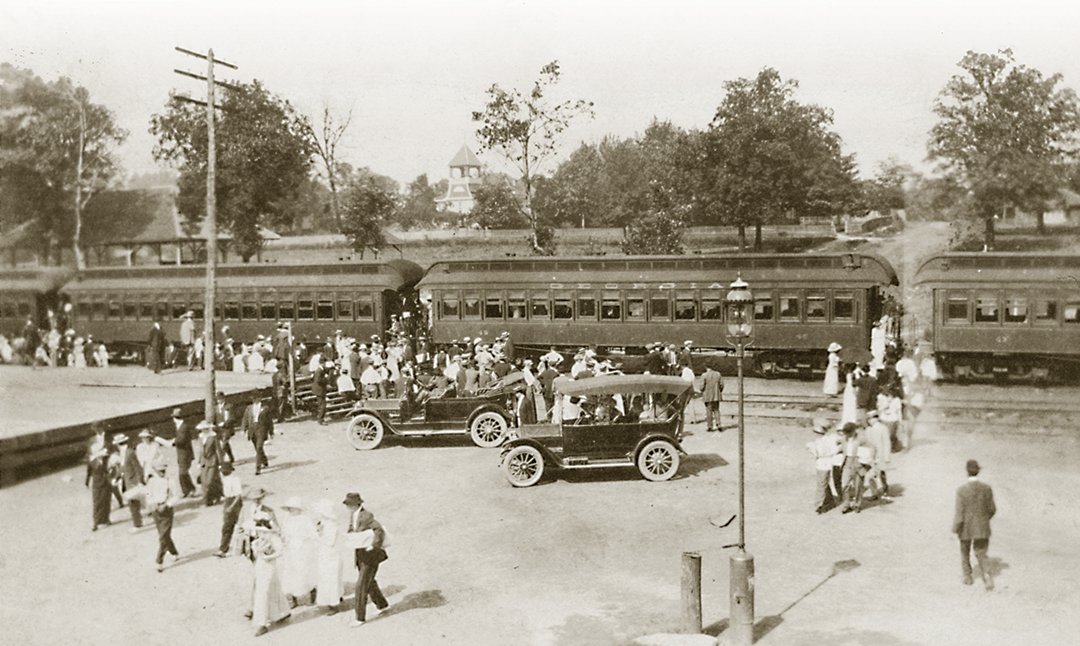About Our Village
Word of Stone Mountain’s compelling natural beauty had reached many new Georgians by the 1830s. The adventurous made the journey by stagecoach or horseback, desiring to see first hand the massive granite landmark and to scope the land that was swiftly being converted from Native American use to Georgia counties. Described in the Macon Telegraph in 1830 as a “stupendous pyramid” of “bold, naked rock,” it did not disappoint. Some, feeling a kinship with the mountain’s natural beauty or sensing economic opportunity, stayed and made their home at a growing frontier settlement established near its base.
The mountain has been known by a variety of names. Rock Mountain was its moniker prior to 1825 but by the close of the 1830s Stone Mountain had become the accepted place name. Like the mountain, the village formed at its base was initially known as Rock Mountain but was incorporated as New Gibraltar in 1839 under an Act of the General Assembly, and then renamed Stone Mountain by an Act of Legislature in 1847.
While the village was debating its name, a new factor came into play that helped forge its identity – the completion of the Georgia Railroad. The right-of-way, which connected the Georgia Railroad with the Western & Atlantic’s terminus in Marthasville to the west, bypassed the early settlement. This prompted Stone Mountain’s forward-looking residents and investors to move the town site to the east side of the newly laid railroad tracks within Land Lot 89 of DeKalb County’s 18th District. The railroad was the defining feature of the young village. Sandwiched between the railroad right-of-way and the mountain, it guaranteed commerce and prosperity with its depot acting as the gateway to the region’s landmark, Stone Mountain.
Investors were keenly aware of Stone Mountain’s tourist potential and some had a hand in developing it in the 1840s. Cloud’s Tower was a perfect example. The viewing tower was built on the mountain’s summit and anchored simply by the structure’s weight. Remembered largely for its sheer audacity, Cloud’s Tower was a curiosity with a short life span; a storm destroyed it and its successor met a similar end. A chance meeting of planter John W. Graves of Newton County and industrialist and planter Mark A. Cooper of Cass County resulted in the first state agricultural fair being held in Stone Mountain in 1846. While the fair had humble beginnings, it grew in size, becoming a “sure enough” fair in 1847 held in a “ten pin” alley in front of the Stone Mountain Hotel. The last fair, held in 1849, was the largest, replete with a circus with a run away elephant, exhibits, and manufacturing and agricultural awards.
The decade before the Civil War was a time of growth, Stone Mountain village’s four hotels and eight stores in 1849 serving a population of about 300. Most residents were native Georgians or South Carolinians but a few hailed from the Northeast and England. Occupations were typical of a small town and mercantilism, commerce, the building trades, and stonecutting were the major livelihoods. About 290 enslaved African Americans were also present working the fields, the quarries, the railroad, and in homes. Some of these individuals would help found Shermantown, an African American neighborhood after the Civil War. In addition to the hotel trade, Stone Mountain village was the home of the Stone Mountain Academy that was incorporated and approved by the General Assembly on December 31, 1838. Stone Mountain would maintain a strong academic presence throughout the nineteenth century, having both public and private schools. Churches were established early in the nineteenth century. They included Baptist, Methodist, and Presbyterian congregations.
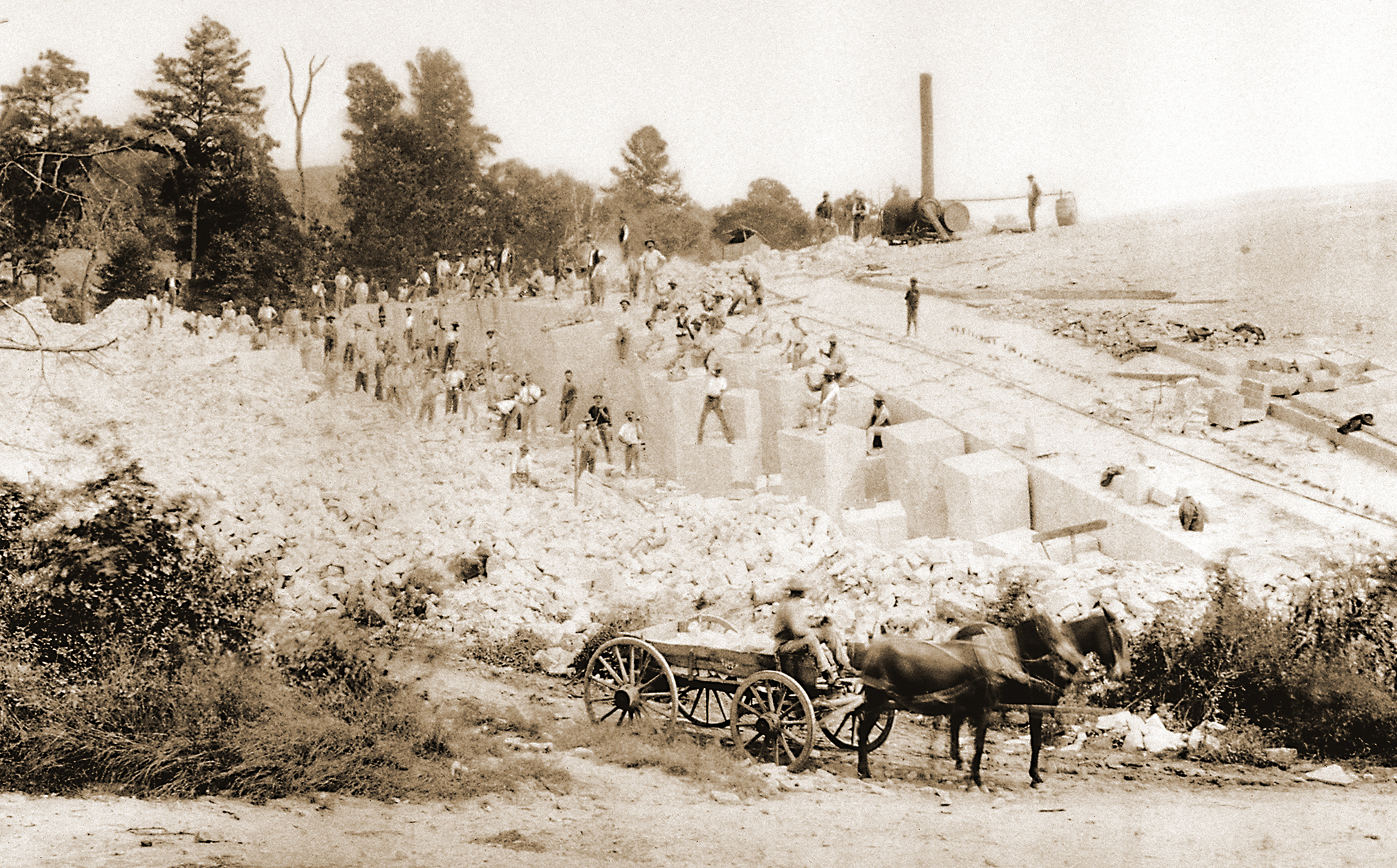
The antebellum village was physically untouched during the Civil War until the Battle of Atlanta. Visitors from Atlanta still made the trip out to the mountain even during the height of the War. Those on the homefront were greatly affected by wartime conditions through the absence of local men serving in the military. For example, the Wells family had five men, brothers and cousins, as well as in-laws serving the Confederacy. Wives, mothers, children, and the elderly were called upon to harvest crops, work in and out of the home for pay, and, in general, do tasks that were once performed by the men.

The Atlanta Campaign transformed the homefront into a warzone. Stone Mountain did not emerge unscathed. Stores, bales of cotton, and the granite depot were burned. The Union forces pulled rails from the tracks, heated, and twisted them to make sure any future use was impossible. A number of unknown Confederate soldiers who were mortally wounded during the many skirmishes that occurred that day and after are interred at the Stone Mountain City Cemetery. Others were treated in homes that were converted into field hospitals. One home would have a cannonball preserved in its walls, a physical reminder of the War for decades. For many, however, the loss of family members would be the paramount sacrifice made.
At the war’s end, the South began rebuilding and Stone Mountain granite was in demand. The Southern Granite Company, run by George Moerlin of Cincinnati, C. D. Horne, William Hoyt Venable and Samuel H. Venable, was incorporated in the 1880s. The company and Stone Mountain would rest solely in the hands of the Venable Brothers by 1887. This corporation ran the quarries that supplied Atlanta with much needed building materials after the Civil War and curbstones and building materials for innumerable other American cities. Skilled workers came to Stone Mountain from England, Scotland, Sweden, Norway, Wales, and Italy to ply their trade. Some made the village their home, joining the community, while others chose other paths. Once source notes that Stone Mountain had “some rough edges back then.”
The rough edges came with a job that was fraught with hard and dangerous labor. The first stabs at quarrying occurred between 1845 and 1850 in which granite was quarried from partially disintegrated ledges. By the end of the century, granite would be cut using mechanized techniques. The railroad was critical to the industry allowing the mountain’s granite to be shipped all over the country and beyond. The Dinky train connected the town and the quarries, bringing the men to the quarry sites and the granite to the depot for shipping. The Venables leased the mountain in 1911 to the Weiblen Brothers of New Orleans; the latter operated quarries there under the name of the Stone Mountain Granite Corporation until 1935.
The 1881-1882 Georgia State Gazetteer and Business Directory gave a fairly full description of the city:
STONE MOUNTAIN – Situated on Mountain Creek; has a population of 800 …. It has two academies, several small schools, Baptist, Methodist and Presbyterian churches -white- and Baptist and Methodist churches-colored-two grist and flouring mills, one saw mill, cotton gin, and two cabinet shops, cotton gin, grist mill and drill operated by steam. One large distillery and quarry in operation here. Cotton, granite and whiskey are the principal shipments.
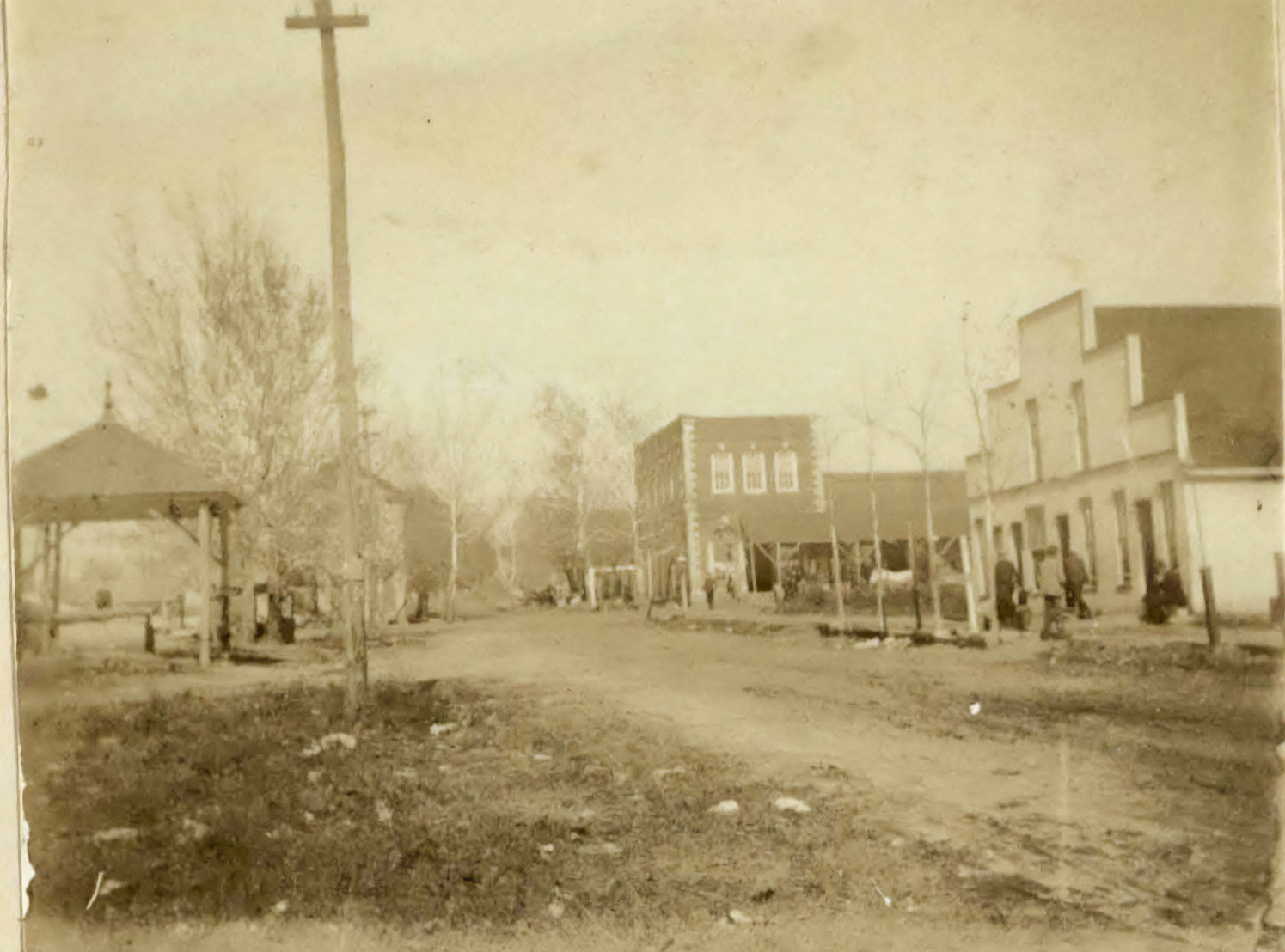
Source: Atherton Seidell Scrapbook, Hargrett Rare Book and Manuscript Library, University of Georgia.
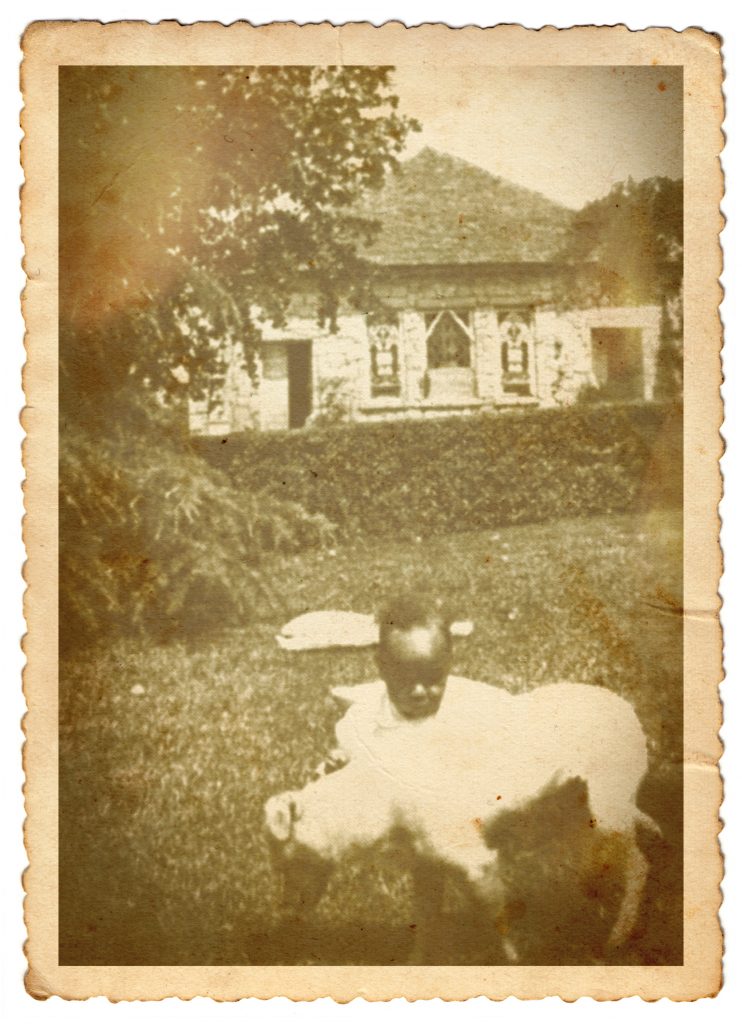
The 1882 business directory lists two African American churches, Baptist and Methodist. The records of the First Baptist Church note that African Americans were part of their congregation prior to the war. Bethsaida Baptist Church was organized in 1868 and St. Paul AME church was also a product of this period. Both are located within Shermantown, a new neighborhood that developed during segregation on the southeastern edge of the city by freedmen and women. The neighborhood featured a mix of small homes and a number of community buildings including two lodge buildings, two churches, and a school.
Stone Mountain was the second largest urban center in DeKalb County by 1890 and was coming into its own as a city. A battle was waged to move the county seat from Decatur to Stone Mountain that was won by popular vote but squelched by a vote in the Legislative Assembly. The village continued to prosper through World War I. Main Street was lined with stores, a bank, post office, pressing club, feed warehouse, and an undertaker. City Hall, the firehouse and the jail were all located on Second Street along with a blacksmith, gristmill and woodworking shop, car dealership and the new Georgia Railway and Power Co. Sub-Station. The Stone Mountain Inn was constructed in 1905. A substantial granite public school served the white population; a Rosenwald School constructed in Shermantown served the black children’s educational needs. The University Boys School, established in 1900, was housed in an impressive brick building in the center of the city. A new streetcar line that linked Stone Mountain with Decatur in 1915 allowed town residents easy access to Decatur and Atlanta through a growing metro mass transit system. The Interurban line entered from the north behind Ponce De Leon Avenue and cut a loop through the downtown.
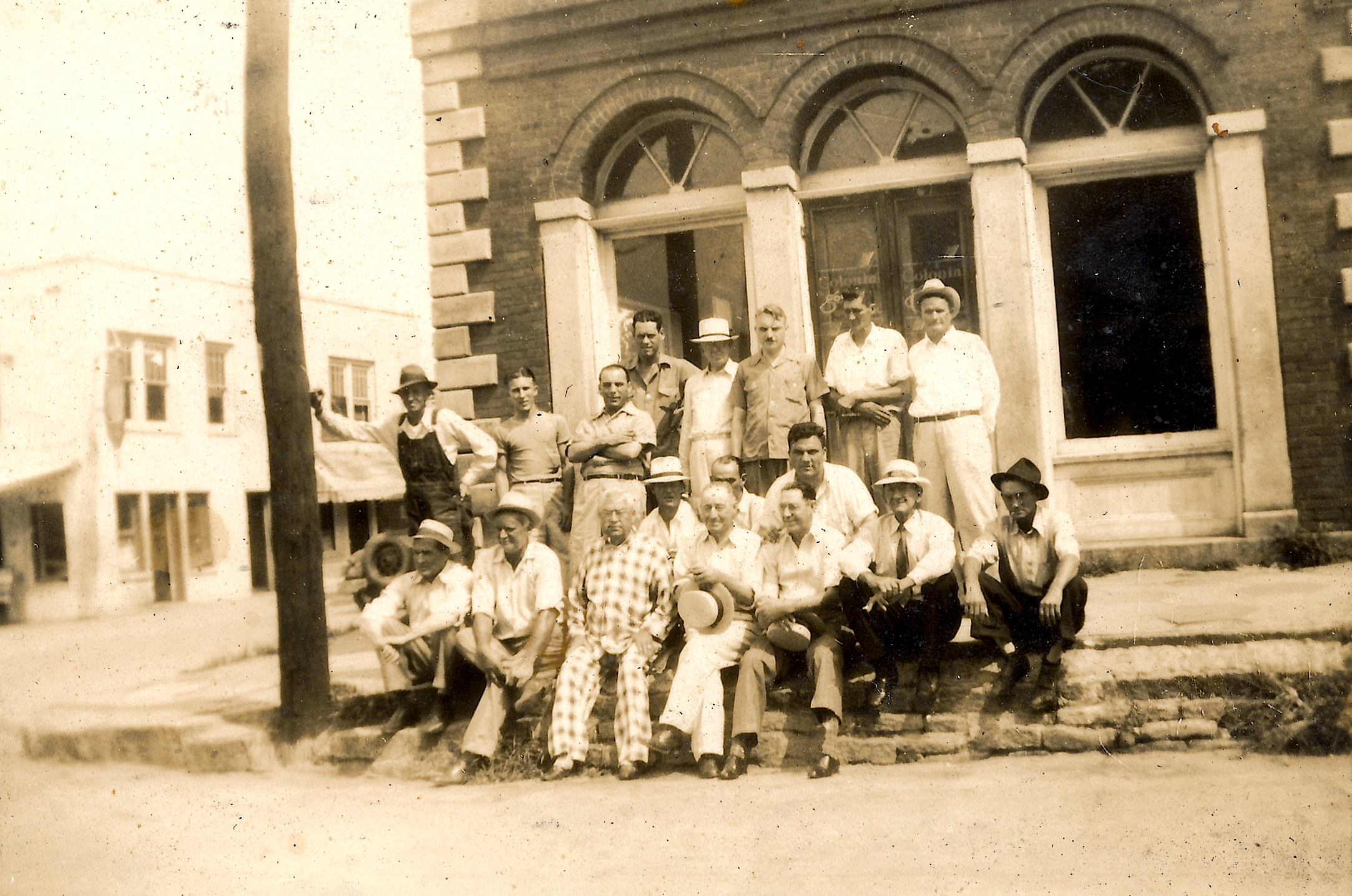
The quarry industry fueled the town’s economy through the opening decades of the twentieth century. Stone Mountain quarries produced 200,000 paving stones and 2,000 feet of curbing a day at the height of their operation. The economy started to decline in the 1930s. Cut stone became less popular as a building material as modern design and building techniques changed. Area residents struggled economically through the Depression. In 1938, Public Work Administration funds for the construction of a Rock Gym alleviated the plight of out of work stonecutters both black and white. The community launched a major effort in the late 1930s to improve the appearance of the village coming out of the Depression.
The idea to carve a Confederate Memorial into the side of Stone Mountain was generated in the early 1910s. The United Daughters of the Confederacy (UDC) and, more specifically, Helen Plane initiated the project by founding the Stone Mountain Memorial Association, hiring noted sculptor Gutzon Borglum, and securing a deed for the face of the mountain and ten adjoining acres from the Venables in 1915. Disagreements over the deed to the land, financial woes exacerbated by the Great Depression, and World War II halted the project for decades.
While the establishment of the memorial was a boon to the area, other uses of Stone Mountain presented a darker side of life. After 1915, the top of the mountain was used by the resurrected Knights of the Ku Klux Klan for rallies. In 1958, the state of Georgia purchased Stone Mountain and the surrounding land in order to establish the park and complete the memorial. The purchase by the state would end the use of the mountain for KKK rallies. However, a field on the west side of the mountain would become the focal point of Klan rallies that included a parade through the village and Shermantown through the 1980s.
The mountain, that was always Stone Mountain village’s backyard, was now to be shared with the world. By the early 1960s, the village was beginning to show its age. Fearing decline, the Stone Mountain Woman’s Club with other groups pushed for the revitalization and rehabilitation of downtown Stone Mountain. Andre Steiner of Robert and Company was asked to create a city plan and in January of 1962, he presented progressive ideas to the community. While the whole of Steiner’s design did not reach fruition; many aspects of his design were implemented and survive today.
Stone Mountain came out of World War II and the Park development era with new growth. Young veterans returned to the area, married, and raised families in new subdivisions blossoming on the outskirts of the city, choosing the small town life they had enjoyed as children. Modern schools were built for both white and African American children. Holiday parades, movies at the Mitchell Theater, and other small town events punctuated life in this workingman’s town. Main Street purveyed goods and services needed by village residents and the Mountain Pharmacy’s backroom was the center of town life and gossip.
The city is now part of the Atlanta metropolitan area. New uses for historic buildings have been found and twentieth-century firsts include the election of a woman to the post of mayor, later followed by the election of an African American. The historic village was listed on the National Register of Historic Places in 2000 as a “rare surviving example of a historic railroad town” that includes the homes of the town founders, the rail line, central business district, residential neighborhoods, and community landmark buildings. Now 175 years after its incorporation, a new municipal building has been constructed and Main Street’s historic buildings have been enhanced with new sidewalks, landscaping, and public art that references the city’s unique history.
– Excerpted from Stone Mountain Village a photographic history compiled in 2014 by the Society and published by Arcadia Press.
